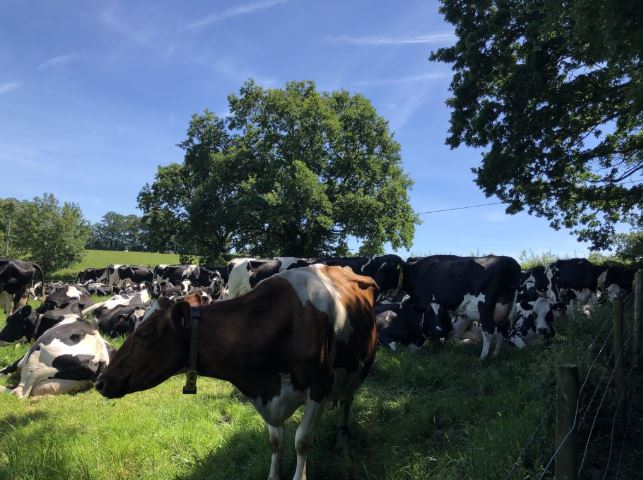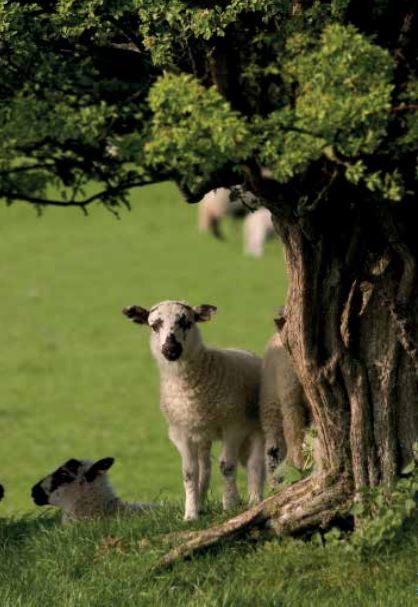Agroforestry can mean many different things but, in essence, it is trees on farms. There are two main types of agroforestry:
1. Silvo-pastoral agroforestry: which means the grazing of animals under trees. The animals enrich the soil while the trees provide shelter, shade and fodder for the animals.
2. Silvo-arable agroforestry: where crops are grown beneath trees, often in rows which are wide enough for machinery to tend to the crops without damaging the trees.
It can be thought of as stacking or 3D farming with layers of income generating additional revenues and benefits. The tree roots reach deep into the ground to cycle nutrients and store carbon, while above ground, the trees protect crops and animals against the elements.
With more extreme weather events the importance of trees will grow. Hotter, drier summers will become normal. Heat stress can cause over heating in cows, resulting in reduced grazing and lower milk production, weight loss and poor body condition.
In winter cold stress can result in poor growth rates as livestock use their energy to maintain body temperature rather than growth. Well designed shelter belts will result in increased animal performance.
There is growing interest in the value of nuts and/or fruit from such systems. Walnut, cob nuts, quince, apple and pear are all being trialled successfully.
Funding
There is now grant assistance in Cheshire for agro-forestry projects to make the planting of the trees cost neutral and provide annual payments of £200/ha/yr if the scheme meets minimum planting requirements. Please contact us for more details.
Different types of agro forestry in pictures:

Silvo-arable Agroforestry 
Medicinal trees e.g. Willow are gaining interest 
Cows using overgrown hedges and infield trees for shade 
Lambs using mature hedgerows for shelter
